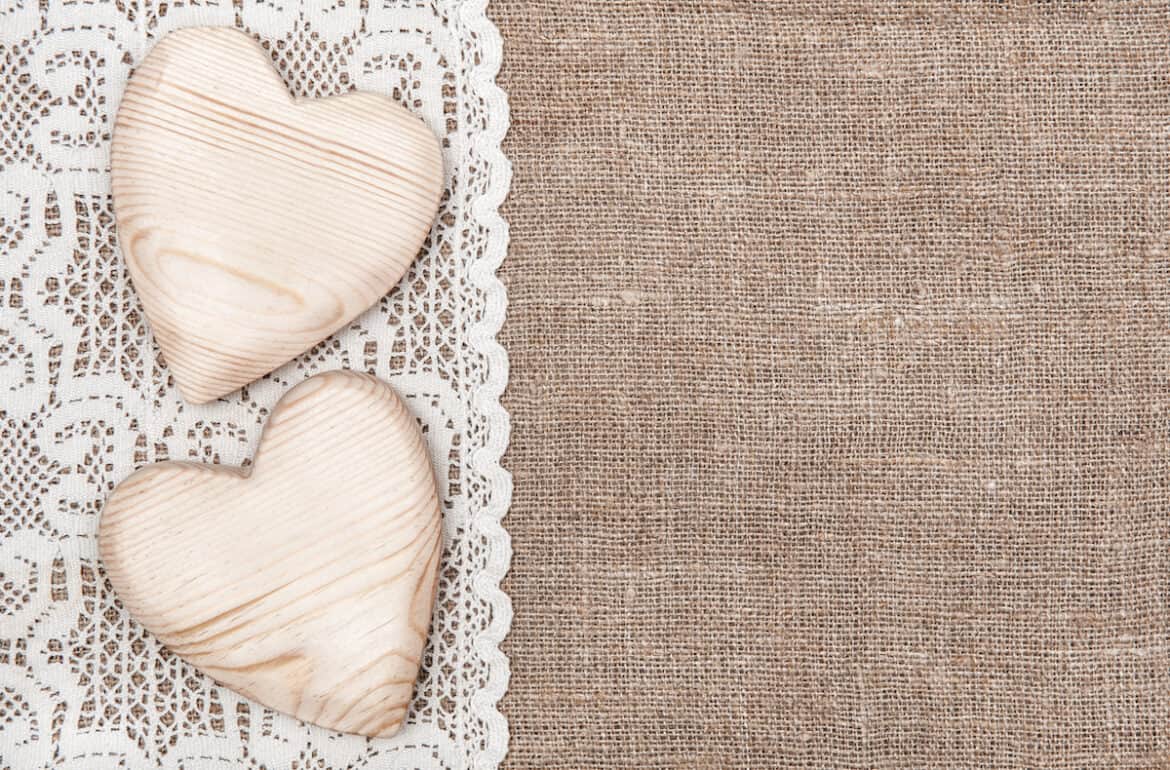Burlap is the new classic. It brings a cozy, countryside vibe to your interior decor, with its golden earthy color that blends beautifully with nearly everything. But that doesn’t mean putting burlap all over. Covering just a few select accessories is enough to bring a rustic touch to life.
If it is your first time working with burlap, there are several ways of handling it, including sewing, using nails, and decorative tack pins. However, glues offer the simplest and quickest way to craft with burlap.
What is the best glue for burlap? The best glue for burlap crafts is Mod Podge. It is versatile, non-toxic, easily accessible, dries clear, and works great with various materials. Other good options include white craft glue, hot glue, fabric glue, and rubber-based glue/
There are other adhesive options, though, depending on the surface and strength of hold you require. Read on to find out more glue options for burlap.
Choosing The Best Glue For Burlap
Before deciding on the type of glue to craft your burlap with, it is important to consider two things. The type of surface you are adhering to, size, and the strength of the hold needed.
Mod podge is the best glue for burlap overall, but there are other options too, which we will look at below.
1. Mod Podge
Every crafter is familiar with mod podge, a popular glue decoupage medium finish, and sealer. Well, it works just as wonderfully on burlap as it does papercrafts.
Mod podge is affordable, non-toxic, fast-drying, and super easy to use. The best part about it, however, is that it can be used to glue the burlap to nearly any surface, wood, metal, leather, fabric, paper, glass, etc.
Just apply a generous amount using a foam brush on any surface, spreading it evenly. Then carefully cover with burlap and let dry. You can cover card stock, glass jars, lampshades, furniture; the possibilities are endless.
What’s more, it acts as a sealer as well, which stiffens the fabric and minimizes dust shedding. You can also change the burlap finish to matte or glossy with mod podge.
It is the best glue for burlap, particularly for adhering burlap to wood, and we’ll tell you how in the section at the bottom of this guide.
2. White Craft Glue
This is a go-to glue for many crafters working with cardboard, paper, fabric, glitter, or felt with burlap. It is non-toxic, affordable, and easily available.
Whether it’s Elmer’s white craft glue or any other favorite brand, this glue is easily accessible. Though good for lightweight gluing, it doesn’t provide the strongest bond and doesn’t work well for burlap on wood or metal.
3. Hot Glue
A hot glue gun is a do-it-yourself staple and comes in handy to glue things quickly and mess-free. You can use hot glue with burlap to attach ribbons, flowers or affix any small and lightweight embellishments.
You don’t need to be generous with hot glue. A dollop of glue or a strip of dots for linear attachments always gets the work done. Unfortunately, it is not ideal for large surface area coverage.
4. Fabric glue
When gluing burlap to burlap or burlap to another fabric, fabric glue is the best option. It is made to dry clear for a seamless appearance and won’t show through.
It offers a very strong hold and is washable too. Therefore, you can clean the burlap without the adhesive coming apart.
5. Rubber-Based Glue
E6000 is the most common rubber-based glue and is an alternative if you are looking for a robust bond. It can be used to adhere heavy embellishment to burlap or join parts that face tension and require high tensile strength. E6000 bonds burlap to many surfaces, including leather and ceramics.
How To Adhere Burlap To Wood
Gluing burlap to wood may seem like a complicated task but is in fact easier than most people think. Here are the steps to follow.
You’ll need:
- Mod Podge
- Foam or paint brush
- Wooden craft
- Sandpaper 100-200 grit
- Handheld vacuum optional
- Scissors or rotary cutter
- Tape measure
Steps:
- Before you start to apply burlap to the wood surface, ensure the wood is smoothed out. You can sand back and forth using 100-200 grit sandpaper over the area you want to attach burlap.
- After sanding your piece of wood, wipe down its surface with a damp rag and allow it to dry, or use a tack cloth to remove debris.
- Take your burlap material outside and shake it several times. It helps to get rid of loose threads, fibers, and dust.
- Alternatively, you can use a handheld vacuum to suck them up—such debris when left prevents the burlap from properly bonding to the wood surface.
- Next, lay the fabric over the piece of wood and leave at least a 1-inch allowance around the fabric. Measure and cut your burlap accordingly. The extra is to give you complete coverage.
- After confirming your piece of wood is dry, apply Mod Podge in an even layer using either foam or painter’s brush. Then place the burlap over it, making sure to position it carefully and accurately.
- Smooth out the wrinkles with your hands. You can also use a handheld roller or a brayer to remove wrinkles. Afterward, let it dry, then cut off the excess fabric.
- Follow with a layer of Mod Podge on top of the burlap to seal it and give it a matte or glossy finish. However, you can skip this part if you don’t want to interfere with the original look and texture of burlap.
Up Next: Can You Iron Burlap?

